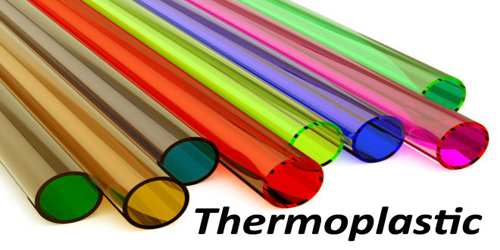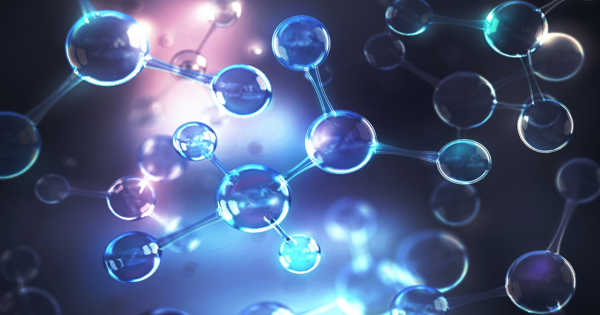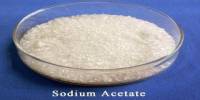Thermoplastic
Definition
Thermoplastic: it is relating to a compound that can be repeatedly made soft and hard through heating and cooling. Polyethylene and polystyrene are thermoplastic resins. Most thermoplastics have a high molecular weight. The polymer chains associate through intermolecular forces, which weaken rapidly with increased temperature, yielding a viscous liquid. Thus, thermoplastics may be reshaped by heating and are typically used to produce parts by various polymer processing techniques such as injection molding, compression molding, calendering, and extrusion.

Thermoplastics are organic materials that melt when heated. They should be differentiated from thermoset materials which cure, or become set, when they are heated. Thermoplastic materials are melt processable that is they are formed when they are in a melted or viscous phase. This generally means they are heated, formed, and then cooled in their final shape.
The most common methods of processing thermoplastics are injection molding, extrusion, and thermoforming.
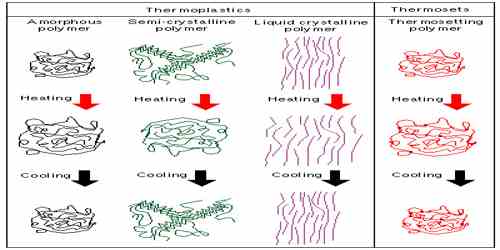
Properties of Thermoplastic
Thermoplastics have wide ranging properties. Depending upon their chemistry they can be very much like rubber, or as strong as aluminum. Thermoplastics are light weight, with densities of .9 to 2 gm/cc. Some high temperature thermoplastic materials can withstand temperature extremes of up to 600 F, while others retain their properties at -100 F. Some Thermoplastic materials have no known solvents at room temperature. Most thermoplastic materials are excellent insulators, both electrical and thermal. On the other hand thermoplastic composites can be made to be electrically conductive with the addition of carbon or metal fibers. In general the combination of light weight, high strength, and low processing costs make thermoplastics well suited to many applications.
Classifications and Uses of Thrmoplastic
Polycarbonate: An amorphous engineering thermoplastic, polycarbonates are characterized by a combo of toughness, transparency, heat/flame resistance and stability. General-purpose molding and used to meet Food and Drug Administration regulations for parts in food-contact and medical applications.
Acrylic: It is also known as Lucite, Perspex and Plexiglas, Acrylic – polymethyl methacrylate (PMMA) – is used as a substitute for glass. Making motorcycle helmet visors, aquariums, windows on planes, viewing ports for submersibles and exterior lights and lenses for cars. It can also be used in medicine to replace eye glass lenses and in bone cement. Acrylic paint is PMMA particles suspended in water.
Polyethylene: Tough and resistant to chemicals, polyethylene comes from a group of materials categorized by density and molecular structure and therefore can have different uses based on those characteristics. Based on the molecular weight and density of the polyethylene, it can be used in everything from moving machine parts, bearings, gears, articificial joints, bulletproof vests, margarine tubs, milk jugs, pipes, bottles, sacks and sheets.
Nylon: Nylon belongs to the polyamides class of polymers and is used in manufacturing heat-resistant materials. It is often used as a substitute for silk in parachutes, flak vests, women’s stockings, fabrics, rope, carpents and strings for musical instruments. It can also be used for mechanical parts, machine screws and power tool casings.

Polystyrene: A synthetic aromatic polymer made from styrene, polystyrene can be solid or foamed. Extruded polystyrene is used for disposable cutlery, plastic models of cars, smoke detector housings and disposable cutlery. Expanded polystyrene foam insulates packaging materials. Extruded polystyrene foam is Styrofoam and polystyrene copolymers are used to make toys and product casings.
Teflon: The DuPont Corporation gave the polymer called polytetrafluoroethylene the brand name Teflon and it belongs to a class of thermoplastics known as fluoropolymers. Coating non-stick cookware, making containers and pipes that need to hold up against reactive chemicals, and is used as a lubricant to reduce wear from friction between sliding parts – gears, bearings, bushings.
Polypropylene: A thermoplastic polymer used in a wide variety of applications. Everything from reusable plastic containers, diapers, ropes, carpets, sanitary pads, piping systems, car batteries, electrical cable insulation and filters for gases and liquids. It can also be used as sheets for stationery folders, packaging and storage boxes. In medicine, it is used to repair hernias and make heat-resistant medical equipment.
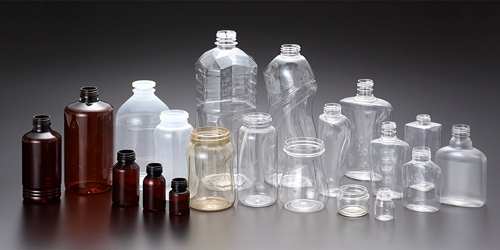
Advantages and Disadvantages of Thermoplastic
- Advantages – Thermoplastics have a good range of properties and are energy efficient both in their manufacture and processing. Thermoplastic components can be made in very high volume with high precision and low cost. Thermoplastics can replace metals with a considerable weight savings, providing proper care is taken in design. Most thermoplastics have better fatigue properties than metals and will tolerate larger deflections than metals without deforming.
- Disadvantages – Thermoplastics melt. Some degrade in direct sunlight or under high U.V. light levels. Many materials have poor resistance to hydrocarbons, organic solvents, and highly polar solvents but others have excellent resistance to these materials. Thermoplastics suffer from creep, a relaxation of the material under long term loading. Many thermoplastic materials, especially composites, tend to fracture rather than deform under high stress levels.
Reference:
